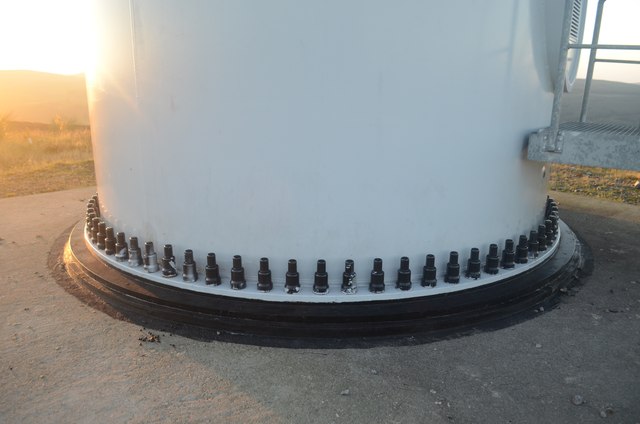Bolting & Fastening: Valuable Tools for Windmill Installation
 Wind turbines are awe-inspiring machines. Rising hundreds of feet into the sky with their blades spinning majestically, it appears nothing could ever bring them down.
Wind turbines are awe-inspiring machines. Rising hundreds of feet into the sky with their blades spinning majestically, it appears nothing could ever bring them down.
However, wind turbines are fatigue machines that are always vibrating and working to loosen their tower fasteners. Increased vibration is likely to occur as engineers develop longer blades to grasp more wind energy, and towers stretch higher to house them. Amplified vibration levels can loosen some tower fasteners, so in an attempt to prevent this, engineers are constantly looking for improved ways to measure tension and prevent corrosion while accounting for total cost of ownership. Below are useful tools for bolting and fastening in windmill installation.
Bolt Tensioner
Bolt tensioning is the stretching of a bolt’s stud. There are several different tools you can use to tighten and loosen the bolts; however, the only tool that will stretch the bolts of the studs is a hydraulic bolt tensioner. This tool allows you to obtain an efficient and consistent bolt stretch.
Tension-control bolts are replacing some conventional high-strength, friction-grip versions since they are swift and easy to install with a lightweight electric shear wrench. A visual inspection and guaranteed tension eliminates the likelihood of operator error, and ensures engineers that connections are tightened according to specifications. Another incentive of this bolting system is that it is effortlessly removed and reused, which inevitably reduces costs.
Electric Torque Wrench
Lighter and smarter wrenches are becoming a rising bolting trend. While hydraulic wrenches and bolt pullers have been a pillar in the wind industry, distinct advantages of electric wrenches are attracting attention. For example, the margin for torque error can be a lot less with an electric wrench since the tools can be locked to a particular torque value. Torque limits on the wrenches can be set for several jobs at one time while working with ±3% accuracy.
In addition, more bolting work asks for accountability; in other words, knowing that each bolt is tightened to a prescribed level. More wind turbine manufactures require proof that each bolt has been installed and maintained at the appropriate torque specs to maintain the manufacturer’s warranty. Innovative electric torque wrenches allow the collection of such data for on-board data loggers to report how many bolts have been torqued, along with failed torques and over torques. It has also been estimated that electric torquing takes about 33% less time than hydraulic torquing.
A few electric torque wrenches even let users tighten bolts to a torque or an angle, simplifying work on wind turbine rotors. This is vital to some torque procedures because it allows technicians to torque in a continuous motion without stopping to rely on someone’s eye to add specific degrees.
Another advantage is the calibration and testing capabilities exceed those of the hydraulic torque tools. Electric wrenches can allow digitally tracking of all torque testing. When testing the electric wrench, data transfers to a program that logs it in a format that can be manipulated to fit one needed for tower manufacturers’ specifications.
Tension Indicators
When making the correct choice for any application, one should also consider the variability of torque tools. Using torque control to generate precise load for actual bolt tensions can vary ± 40%. One solution crews may find for a better tension indicator is a direct-tension indicator that squirts. This presents a washer that indicates when a target tension has been reached in a bolt, regardless of the applied torque. When the bumps on the washer sufficiently compress, a brightly colored silicone ejects from cavities under the bumps. The compression tolerance of the bumps and squirt appearance are calibrated to a required tension.
Other construction trends present ways to maintain bolt security. For example, a locking washer is one way to eliminate fastening failure. This device comprises of two pre-assembled washer-shaped pieces; one with inclined cams is placed between the nut and joint material, and a series of radial ridges on the other. The cam angle is greater than the bolt-thread-pitch angle, so the interlocking cams and non-slip ridges of the washer jam to prevent the nut from loosening under vibration.
Aztec Bolting Services can provide assistance with a variety of wind industry tools at one of our many locations or on your job site. Contact us today to see how you can benefit from our wind industry services and tools.





